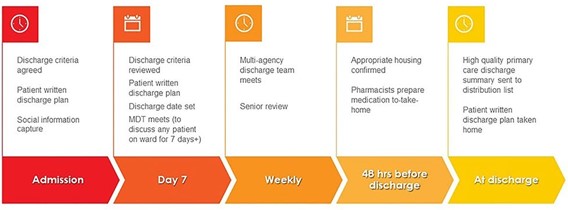Which individual with a mental illness may need emergency involuntary hospitalization for mental illness?
The individual who:
Select one:
want to hurt a neighbor due to command hallucinations.
reports hearing angels playing harps during storms.
resumes using heroin every day while still taking treatment with methadone.
does not show up for a very important appointment in the Mental health clinic
The Correct Answer is A
Involuntary hospitalization for mental illness is typically reserved for situations where an individual poses an immediate danger to themselves or others due to a severe mental illness. In option A, the individual is experiencing command hallucinations, which are often a symptom of a severe mental illness such as schizophrenia. The fact that they want to hurt their neighbor is a clear indication that they pose a danger to others and require emergency intervention.
Option B may indicate a mental illness such as schizophrenia or bipolar disorder, but it does not necessarily pose an immediate danger to the individual or others.
Option C may indicate a relapse in addiction, but again, it does not necessarily pose an immediate danger to the individual or others.
Option D may indicate a need for follow-up and intervention, but it does not indicate an immediate danger to the individual or others.
Nursing Test Bank
Naxlex Comprehensive Predictor Exams
Related Questions
Correct Answer is A
Explanation
Chronic anxiety is a persistent feeling of unease, worry, or fear that can interfere with daily life. To manage chronic anxiety, the client needs to identify anxiety-producing situations that trigger their symptoms. This can help the client avoid or cope better with these situations. It is important to note that it is not always possible to eliminate stress and anxiety from daily life, so it is better to focus on managing it effectively.
Trying to repress feelings of anxiety is not a helpful strategy and can make the client's symptoms worse in the long run. Repressing emotions can lead to feelings of frustration, irritability, and even physical symptoms such as headaches or muscle tension.
Contacting the crisis counselor once a week may be helpful for some clients, but it is not a standard recommendation for all clients with chronic anxiety. The discharge plan should include personalized recommendations that are tailored to the client's specific needs and circumstances.

Correct Answer is C
Explanation
During the termination phase of the nurse-client relationship, the nurse should focus on making appropriate referrals to ensure that the client continues to receive the care and support they need after the relationship with the nurse has ended.
Option a. Developing realistic solutions is an important task during the working phase of the nurse-client relationship, when the nurse and client work together to identify and implement solutions to the client’s problems.
Option b. Building rapport and trust is an important task during the orientation phase of the nurse-client relationship, when the nurse and client get to know each other and establish a therapeutic relationship.
Option d. Identifying expected outcomes is an important task during the planning phase of the nursing process, when the nurse and client work together to set goals and develop a plan of care.
Whether you are a student looking to ace your exams or a practicing nurse seeking to enhance your expertise , our nursing education contents will empower you with the confidence and competence to make a difference in the lives of patients and become a respected leader in the healthcare field.
Visit Naxlex, invest in your future and unlock endless possibilities with our unparalleled nursing education contents today
Report Wrong Answer on the Current Question
Do you disagree with the answer? If yes, what is your expected answer? Explain.
Kindly be descriptive with the issue you are facing.
